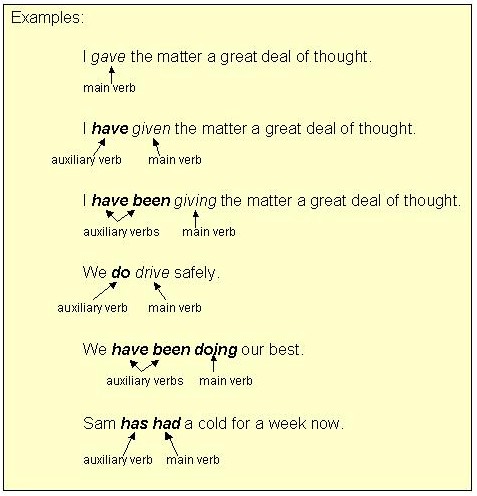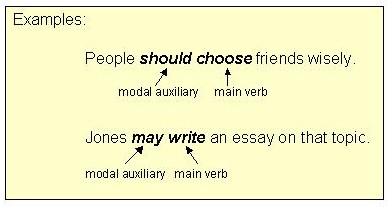AUXILIARY VERBS
Category 1: be, have, do
These forms of to be, to have, and to do are used before the main verb.
Their purpose is to change time or emphasis.
|
Unlike other structure words, these auxiliary verbs |
|
|

Category 2: Modal auxiliaries
The list below shows all of the modal auxiliaries:
Present |
can |
may |
will |
shall |
must |
|
Past |
could |
might |
would |
should |
------- |
|
Unlike the auxiliaries be, have, and do, modal auxiliaries |
|
1. do not use inflectional endings (-s, -ed, -ing, -en) |
|
2. cannot function as main verbs. |
|
|
|
When a verb phrase uses both kinds of auxiliary verbs, the modal auxiliary always precedes the be, have, or do auxiliary.
|

